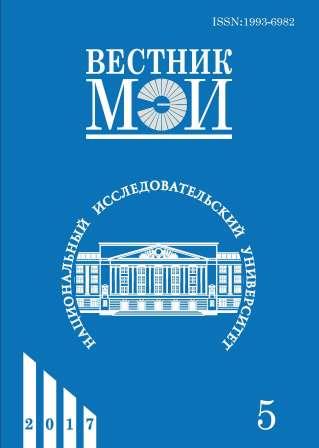Recognition of Joined-up Handwritten Words by Means of Fuzzy Glyraphs
Abstract
A method for recognizing a joined-up handwritten text is considered. Central to the method is the concept of glyraph, a special construction combining the properties of a graph and a line drawing. A modified glyraph is constructed proceeding from the original image of a handwritten word as a set of lines with a thickness of one point, called branches. The glyraph is mapped to the support graph whose vertices are the end points of branches and the nodal points at which several branches converge, and whose edges are the branches themselves. A fuzzy glyraph is a glyraph with a fuzzy support graph, which is constructed in the course of training. Procedures for constructing fuzzy glyraphs and for comparing their support graphs are described. One possible procedure for recognizing joined- up handwritten words involving interaction of two processes, namely, combining certain sets of branches into a group and identifying the obtained groups as some characters, is proposed. The combining of branches into a group is essentially a selection of some subglyraph in the original glyraph, and identification of a character implies recognition of similarity between the selected subglyraph and library glyraphs representing the characters. Decomposition of a word into subglyraphs is an ambiguous task that may imply various cases, due to which this phase is ended with the graph of word characters, which is an oriented graph without cycles, whose edges correspond to the characters. Each path in this graph from the initial vertex to the final one represents one of possible cases of recognizing the word. The identification is performed in a few steps. At the first step, the reference graphs the fuzzy support graphs of which are similar to the support graph of the glygraph being identified are found, and the similarity degree of the support graphs is determined. At the second step, the branches of the found reference glyraphs are compared with the corresponding branches of the glyraph being identified. In so doing, the similarity coefficients of the corresponding branches and the overall similarity coefficient of glyraphs are calculated. At the third stage, the reference glyraph most similar to the glyraph being identified is selected, and the character of this reference glyraph is compared.
References
2. Xue H., Govindaraju V. Hidden Markov Models Combining Discrete Symbols and Continuous Attributes in Handwriting Recognition // IEEE Trans. Pattern Analysis and Machine Intelligence. 2006. V. 28. No. 3. Pp. 458—462.
3. Chichang J., Hang-Chang L. Handwritten Numeral Recognition Based on Simplified Structural Classification and Fuzzy Membershios // Expert System Appl. 2009. V. 36. No. 9. Pp. 11858—11863.
4. Qiao Y., Nishiara M., Yasuhara M. A Framework Toward Restoration of Writing Order From Single-Stroked Handwriting Image // IEEE Trans. Pattern Analysis And Machine Intelligence. 2006. V. 28. No. 11. Pp. 1724—1737.
5. Ghosh M., Ghosh R. A Fully Automated Offline Handwriting Recognition System Incorporating Rule Based Neural Network Validated Segmentation and Hybrid Neural Network Classifier // Intern. J. Pattern Recognition and Artificial Intelligence. 2004. V. 18. No. 7. Pp. 1267—1283.
6. Астахова И.Ф., Мищенко В.А., Краснояров А.В. Алгоритм обучения нечеткой нейронной сети Ванга – Менделя для распознавания рукопечатных символов в работе почтовой службы // Вестник ВГУ. Сер.«Системный анализ и информационные технологии». 2011. № 2. С. 144—148.
7. Князев А.В. Об одном подходе к распознаванию рукописных слов // Вестник МЭИ. 2010. № 5. С. 124—128.
8. Князев А.В. Распознавание слитных рукописных слов с помощью модифицированных глирафов // Вестник МЭИ. 2016. № 1. C. 39—43.
---
Для цитирования: Князев А.В. Распознавание слитных рукописных слов с помощью нечетких глирафов // Вестник МЭИ. 2017. № 5. С. 117—120. DOI: 10.24160/1993-6982-2017-5-117-120.
#
1. Artieres Th., Marucatat S. Online Handwritten Shape Recognition Using Segmental Hidden Markov Models. IEEE Trans. Pattern Analysis and Machine Intelligence. 2007;29;2:205—217.
2. Xue H., Govindaraju V. Hidden Markov Models Combining Discrete Symbols and Continuous Attributes in Handwriting Recognition. IEEE Trans. Pattern Analysis and Machine Intelligence. 2006;28;3:458—462.
3. Chichang J., Hang-Chang L. Handwritten Numeral Recognition Based on Simplified Structural Classification and Fuzzy Membershios. Expert System Appl. 2009;36;9:11858—11863.
4. Qiao Y., Nishiara M., Yasuhara M. A Framework Toward Restoration of Writing Order From Single-Stroked Handwriting Image. IEEE Trans. Pattern Analysis And Machine Intelligence. 2006;28;11:1724—1737.
5. Ghosh M., Ghosh R. A Fully Automated Offline Handwriting Recognition System Incorporating Rule Based Neural Network Validated Segmentation and Hybrid Neural Network Classifier. Intern. J. Pattern Recognition and Artificial Intelligence. 2004;18;7:1267—1283.
6. Astahova I.F., Mishchenko V.A., Krasnoyarov A.V. Algoritm Obucheniya Nechetkoy Neyronnoy Seti Van- ga – Mendelya dlya Raspoznavaniya Rukopechatnyh Simvolov v Rabote Pochtovoy Sluzhby. Vestnik VGU. Ser. «Sistemnyy Analiz i Informatsionnye Tekhnologii». 2011;2:144—148.
7. KnyazevA.V. Ob Odnom Podhode k Raspoznavaniyu Rukopisnyh Slov. Vestnik MPEI. 2010;5:124—128.
8. Knyazev A.V. Raspoznavanie Slitnyh Rukopisnyh Slov s Pomoshch'yu Modifitsirovannyh Glirafov. Vestnik MPEI. 2016;1:39—43.
---
For citation: Knyazev A.V. Recognition of Joined-up Handwritten Words by Means of Fuzzy Glyraphs. MPEI Vestnik. 2017;5: 117—120. (in Russian). DOI: 10.24160/1993-6982-2017-5-117-120.




